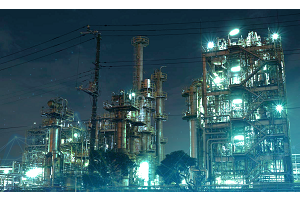Recently, neural networks have been in the spotlight. The question remains: How can they affect our world today and tomorrow? The CAGR (compound annual growth rate of the world neural network market is projected to be 26.7% from 2021 to 2030. This fact suggests that new fields of application for them might appear soon.
Since IoT (the Internet of Things) is now the most demanded technological solution for business 61% of companies use IoT platforms – we can also expect closer integration of the neural networks to enterprise IoT solutions. This knowledge brings questions, says Julia Mitchell, business operations manager at Professional Software Associates (PSA). Questions such as: What brings such interaction, and how to prepare for it? Is it possible to optimise the IoT ecosystem through neural networks, and who can consider such solutions? To answer these questions, PSA has prepared workable cases of enterprise IoT where neural networks have already manifested themselves. Additionally, they use pitfalls that slow down their implementation.
What is a neural network and how is it helpful for enterprise IoT?
An artificial neural network (ANN) is a network of artificial neurons aiming at simulating the analytical mechanisms carried out by the human brain. This form of artificial intelligence (AI) involves a range of algorithms. Which can “learn” from its own experience and improve itself. Unlike classical algorithms that are programmed to solve a specific task. Thus, over time, the neural network does not become obsolete. On the contrary, it only gets better!
EIoT (enterprise internet of things) and ANN, with proper implementation, can provide the business with what it values most – precise analytics and forecasts. In general, one cannot compare the two. Enterprise IoT is a system that requires software for data analysis, while ANN is a component that requires a large amount of data to be functional. Their tandem naturally manages the analytical tasks and, therefore, high-level business tasks most effectively – reducing maintenance costs, automating processes, finding new revenue sources, and so on.
In the IoT ecosystem, neural networks benefit within two areas above all:
- Data acquisition through ANN-based machine vision
- Advanced-data analysis
And if it takes significant investments to implement ANN in big data analytics solutions, neural network image processing can reduce the cost of the IoT solution. Thus, neural networks enhance enterprise IoT solutions, increase their value, and accelerate their adoption globally.
Which solutions within enterprise IoT can be improved through neural networks?
IoT-based visual control
The IoT ecosystem starts with data collecting. Their quality directly affects the accuracy of the ultimate forecast. In the case you execute visual control in your production processes, neural networks can enhance the quality of your products by replacing obsolete algorithms. Also, they will optimise the ultimate EIoT solution. Conventional machine vision systems are expensive. Due to the fact they require the highest resolution cameras to detect the tiniest defects in a product. Unfortunately, they come with complicated specific software. Failing to react to immediate changes.
Neural networks within machine vision systems can:
- Reduce camera requirements
- Self-learn on your data
- Automate high-speed processes
Indeed, industrial cameras use large-format global shutter sensors with high sensitivity and resolution to produce the highest quality images. However, well-trained ANN begins to recognise images over time. Allowing them to reduce the technical requirements for the camera and, consequently, the final cost of the enterprise IoT implementation. To identify tiny components such as those in circuit boards, you cannot sacrifice the quality of images. However, for printing production, food packaging, or completeness checking – it’s manageable.
Neural networks identify objects from the images after training using massive amounts of YOUR data. It allows you to customise the EIoT solution and train the ANN to work specifically with YOUR product by processing your images. For instance, convolutional neural networks (CNN) are used actively in the healthcare industry for detecting X-rays and CT scans. Results provided by such custom systems are much more accurate than conventional ones.
The ability to process info at high speeds allows for the automation of production processes. When the defect is detected, neural networks immediately report it to the operator or launch an intelligent reaction, such as automatic sorting. Thus, allowing real-time detection and rejection of defective production. A prime example of how ANN is used for edge and fog computing.
According to PSA, a neural network implemented in a machine vision system allows reducing the number of defects by 90% in half a year, while production costs are reduced by 30%. Prospective areas for ANN in IoT visual control are QA (quality assurance), production, sorting, collecting, marking, ADAS, and traffic control.

Big data advanced analytics for enterprise IoT
Today, there are neural networks that maximally allow for reaching the overwhelming business benefits making the headlines of technology media – predictive maintenance, asset management, new revenue flows, and so on. It is possible through deep neural networks (DNN) and the method called deep learning (DL) involving multiple layers for data processing. Using classification, clustering, and regression methods – they identify hidden data trends and valuable information from a significant dataset. Resulting in effective business solutions and the facilitation of business applications.
As compared with traditional models, DL copes with the features that are common for IoT data:
- Consider the time of taking measurements
- Withstand the high noise of the enterprise IoT data
- Perform accurate real-time analysis
- Identify heterogeneous and inconsistent data
- Process a large amount of data

In practice, this means you do not need intermediate solutions to deliver and sort the data in the cloud, or to analyse them in real-time. For instance, full-cycle metallurgical enterprises can implement one solution to analyse the variable and unstructured data from metal mining, smelting, and manufacturing final products. Airplanes produce about 800TB of data per hour, which makes it impossible to process it all perfectly via conventional analytical systems.
For today, DNN models proved to be successful with the following enterprise IoT applications:
Healthcare. Disease prediction using AI-based IoT systems is actively developing. For example, a recent invention based on a neural network can assess the risk of a heart attack by up to 94.8%. DNNs also succeed in disease detection: the spectrogram of a person’s voice obtained utilising IoT devices makes it possible to identify voice pathologies after DNN processing. In general, the accuracy of ANN-based IoT health monitoring systems are estimated to be above 85%.
Power consumption. DL systems in enterprise IoT have shown results in power demand forecasting based on consumption data, power price forecasting, power theft detection, anomaly, and leak detection. Smart metre data analysis allows you to estimate consumption, identify the abnormal usage of electricity, and make a forecast with an accuracy of more than 95%, which means that you can adjust energy consumption.
Manufacturing. Neural networks make it possible to perfect the most demanded IoT service among manufacturers – predictive maintenance of the equipment. It was proven to be a workable practice for both mechanical and electrical systems. This network offers precise real-time status monitoring and a forecast for useful life rest. Another spectacular case – is the recognition of employee activity by taking readings from their armband and subsequent in-depth analysis.
Transportation & Logistics. Deep Learning makes intellectual transportation systems possible. It regards improved traffic congestion management by processing the speed, travel time, weather, and parking occupation forecasting. Analytical reports based on vehicle data help detect dangerous driving and possible issues before the failure happens.
As we can see, the previous industries produce heterogeneous data. Thus, the potential of ANN analytics within enterprise IoT are expected to be unlocked for multiple complicated systems.

Summing up: When to consider ANN for enterprise IoT
So far, research in the field of ANNs is very active, and we cannot predict all the benefits or pitfalls these solutions will bring. Surely, neural networks detect correlations, models, and trends better than other algorithms. As the data generated by the IoT ecosystem is only getting larger, more complex, and diverse, we can say that the development of neural networks is the future of IoT.
For today, we can note the following features of neural networks for enterprise IoT:
- They fit into the IoT ecosystem architecture, replacing alternative solutions with great benefits.
- Indispensable for industrial image processing.
- Advanced ANN-based data analytics brings the high-level business value of the enterprise IoT solutions – increase productivity, accuracy, increase sales and create informed business decisions.
- It needs time and expenses to train the ANN, but in time, it will become fully customisable.
- We cannot call this solution affordable, but if the IoT ecosystem is implemented correctly, the benefits are priceless.
Thus, if you are offered a neural network as one of the options for implementing your idea within the IoT ecosystem, at least consider this option. Who knows, maybe this solution will become a must-have in the near future.
Comment on this article below or via Twitter: @IoTNow_OR @jcIoTnow











